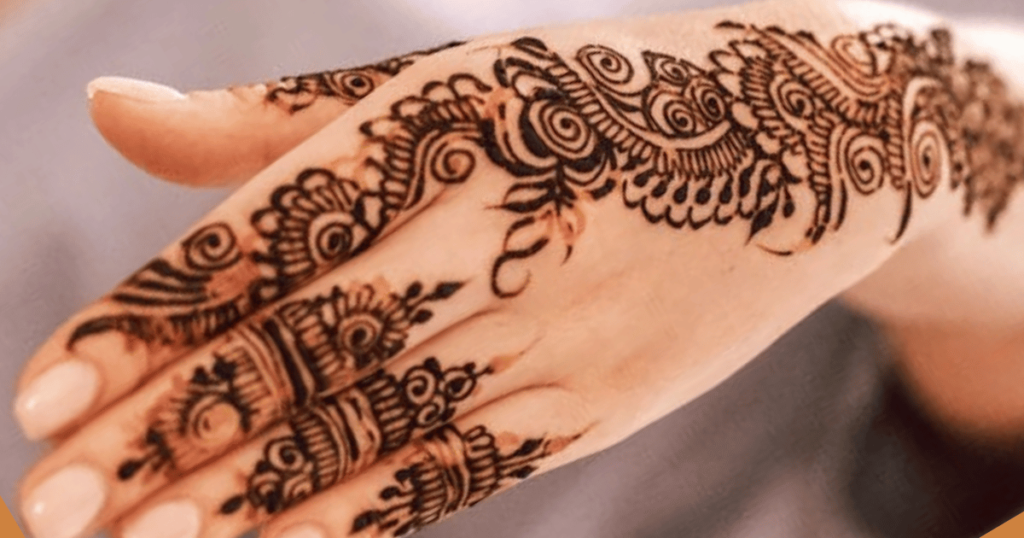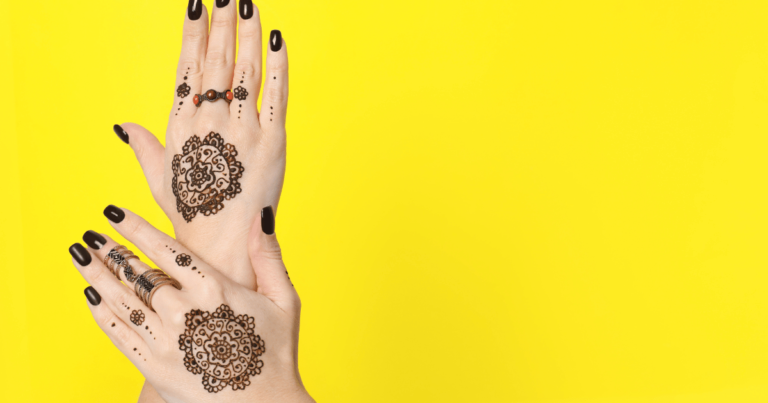Mehndi, also known as henna, is an integral part of many cultural rituals, celebrations, and fashion trends worldwide. Whether you’re a bride planning your big day, a cultural enthusiast exploring traditions, or a fashion blogger looking for fresh inspiration, simple mehndi designs offer the perfect balance of beauty and sophistication.
This guide will walk you through everything you need to know, including various mehndi patterns, tips for achieving the perfect design, and frequently asked questions about mehndi.
Table of Contents
Why Choose Simple Mehndi Designs?
Intricate mehndi designs are undeniably stunning, but simplicity has its charm. Simple designs:
- Highlight elegance and minimalism.
- Are quicker and easier to apply, making them perfect for beginners or hectic schedules.
- Complement both modern and traditional outfits seamlessly.
- Allow subtle, beautiful expression for casual or professional events.
Whether you’re attending a wedding, Eid celebration, or Diwali festival—or simply want a stylish design—simple mehndi is a versatile choice.
Popular Types of Mehndi Designs
H2 Traditional Indian Mehndi
Indian mehndi often features elaborate patterns like peacocks, paisleys, and flowers. However, simple Indian designs often center around neat symmetrical patterns or a single bold motif on the palms or feet. These are ideal for bridesmaids or casual wear.
H2 Arabic Mehndi
Arabic mehndi designs are characterized by bold outlines and minimal filler work. They often flow in a leafy or floral pattern, typically trailing diagonally across the hands or feet. This makes them less time-consuming yet incredibly eye-catching.
H2 Moroccan Mehndi
Modern and geometric, Moroccan mehndi uses shapes like diamonds, grids, and triangles. It’s one of the simplest styles to replicate, making it perfect for those new to mehndi application.
H2 Fusion Mehndi
Fusion mehndi combines elements from various traditional styles, creating patterns that are unique and contemporary. These are perfect for fashion-forward individuals looking to stand out.
Easy Mehndi Designs to Try
| Design | Description | Best For |
| Mandala Design | A single circular pattern surrounded by smaller, symmetrical details for an elegant look. | Casual events, Eid |
| Leafy Trails | Simple floral and leafy patterns that flow diagonally across the hand or wrist. | Weddings, parties |
| Minimal Finger Art | Small, intricate designs placed only on the fingers for a subtle yet beautiful look. | Daily wear, work |
| Heart-Inspired Patterns | Two hearts placed on each hand, connecting when the hands join together—popular for engagements and weddings. | Engagements, proposals |
| Geometric Patterns | Straight lines, triangles, and grids creating a sleek, modern look. | Fashion shoots, festivals |
| Personalized Mehndi | Incorporating initials or meaningful symbols into simple designs, often used for weddings or anniversaries. | Weddings, anniversaries |
Want to try one of these designs? You don’t need to be a professional artist. With a steady hand and some practice, you’ll be able to create masterpieces in no time.
Tips for Creating the Perfect Simple Mehndi Design
- Choose the Right Cone: A high-quality mehndi cone allows for better control and smoother application.
- Keep the Design Symmetrical: For beginners, start with symmetrical designs to ensure your patterns look balanced and neat.
- Practice on Paper: Sketch your designs beforehand to perfect your flow and accuracy.
- Prep the Skin: Clean and exfoliate your hands or feet for better color absorption.
- Stay Steady: Apply the mehndi in a calm, relaxed position to avoid shaky lines.
Mehndi Aftercare for Long-Lasting Color
Simple designs deserve rich, dark mehndi stains! Here’s how to ensure your mehndi lasts:
- Leave the paste on for at least 6-8 hours for optimal staining.
- Apply a mixture of lemon juice and sugar to the design once it dries. This enhances the color.
- Avoid washing your hands or scrubbing the design immediately after removal.
- Apply Vicks or clove oil over the design after removing the mehndi for a deeper stain.
How Simple Mehndi Elevates Bridal Looks
While bridal mehndi traditionally involves intricate detailing, many modern brides are opting for simpler, more elegant patterns. Here’s why:
- Customizable: Brides can match their simple mehndi to their wedding theme or outfit.
- Quicker Application: It saves time during hectic wedding schedules.
- Versatility: Beautifully pairs with modern outfits like gowns or jumpsuits for pre-wedding events.

Frequently Asked Questions (FAQ)
How long does mehndi last?
Mehndi typically lasts 7-10 days, depending on skin type, aftercare, and exposure to soap and water.
Can I create simple mehndi designs at home?
Yes! With practice, simple designs like mandalas, hearts, and leafy trails can easily be recreated at home.
What’s the best mehndi for deep color?
Look for cones made with natural henna and avoid chemical-laden varieties for better, long-lasting color.
Does mehndi cause allergies?
While rare, some people may experience irritation. Always do a patch test before applying mehndi.
What is the ideal time to apply mehndi for an event?
Apply mehndi 1-2 days before the event to ensure the stain has developed into a rich, dark color.
Enhance Your Personal Style with Simple Mehndi
Simple mehndi designs are more than just temporary art—they’re an invitation to explore and celebrate heritage, tradition, and individuality. Whether you’re walking down the aisle, attending a festival, or looking for an artistic touch to complete your outfit, mehndi’s beauty lies in its versatility.
Explore the world of mehndi and find a design that represents your style. If you’re looking for fresh inspiration, artistic tips, or cultural insights, connect with us for expert mehndi guidance. Follow our blog for updates on design trends and techniques.

